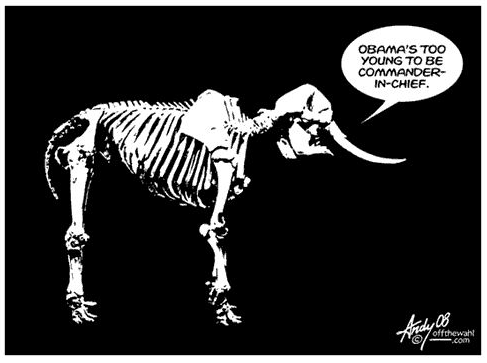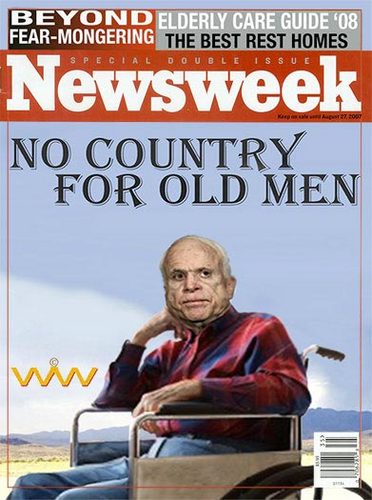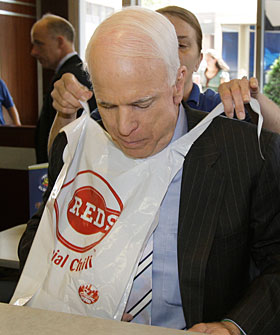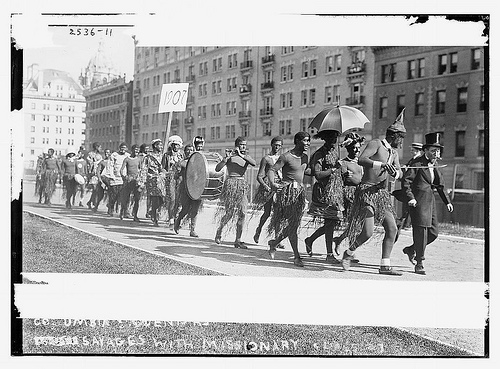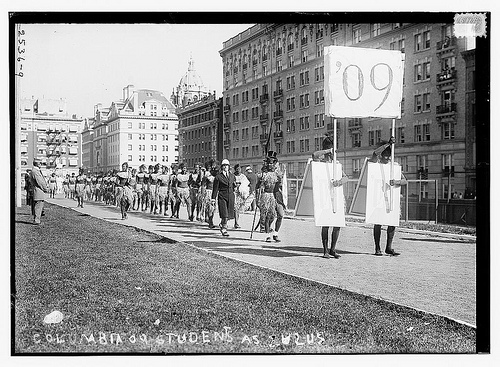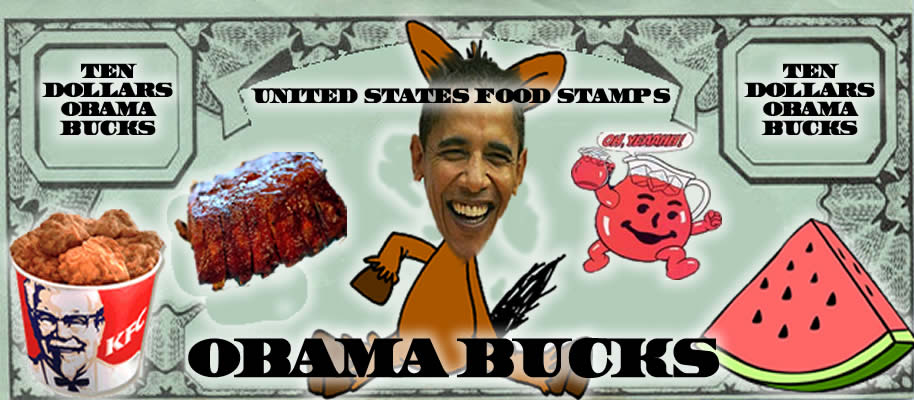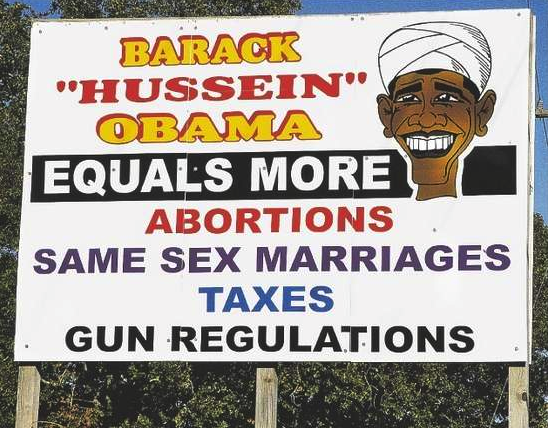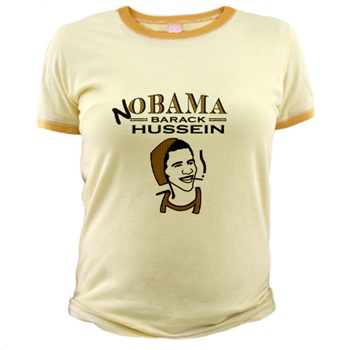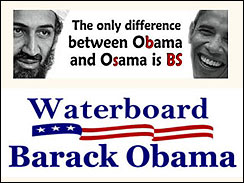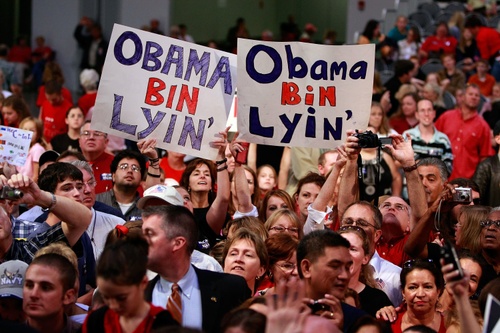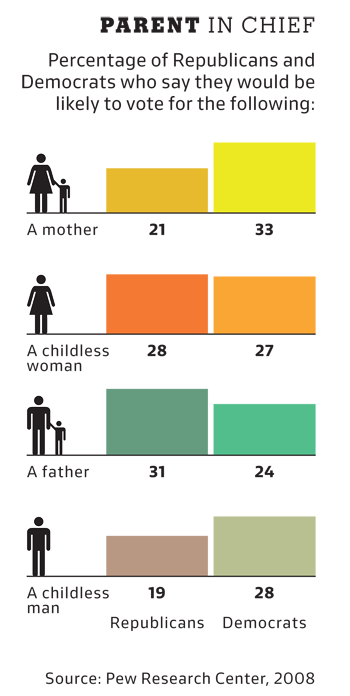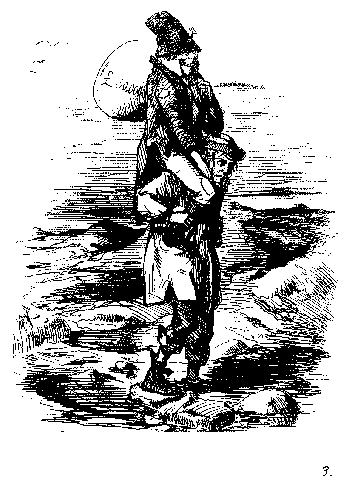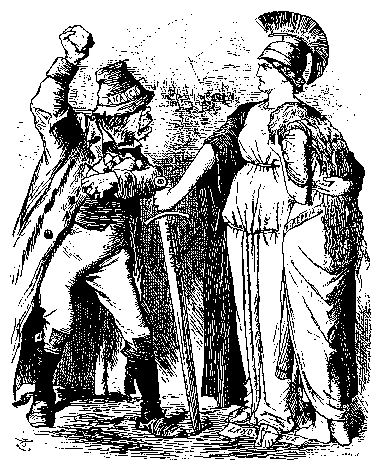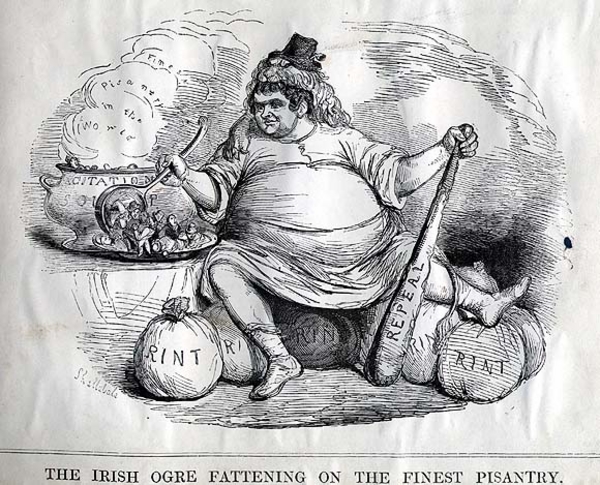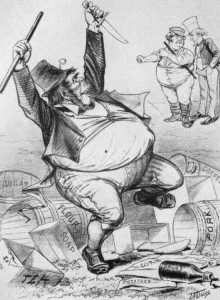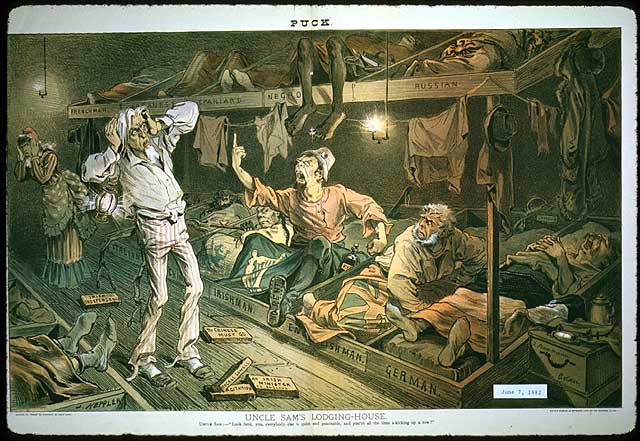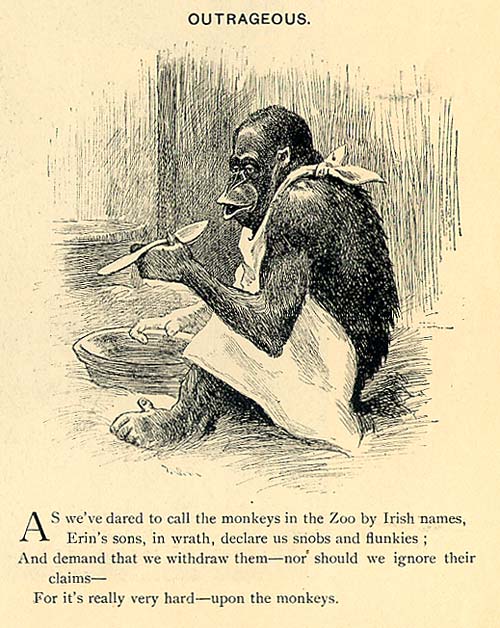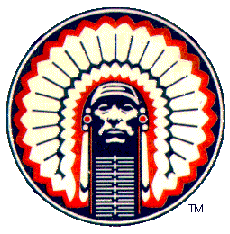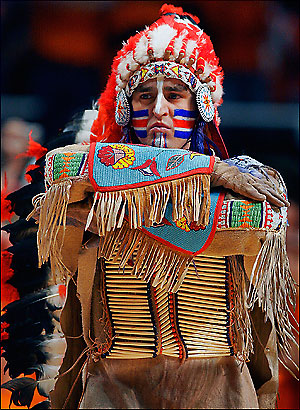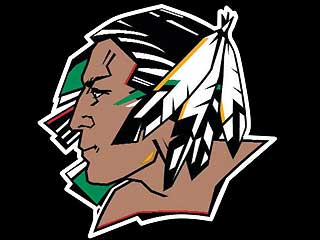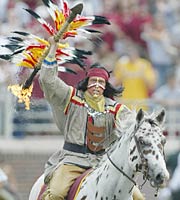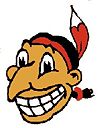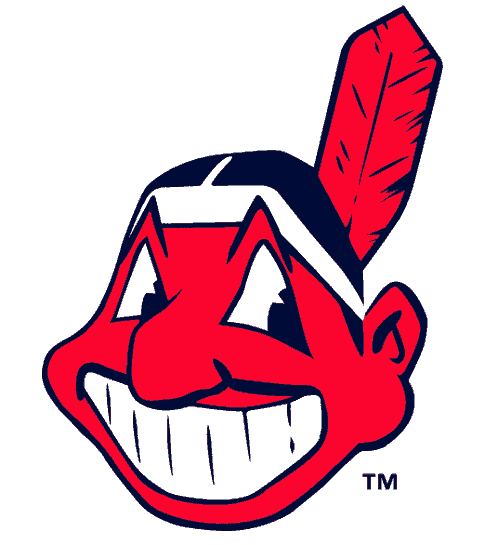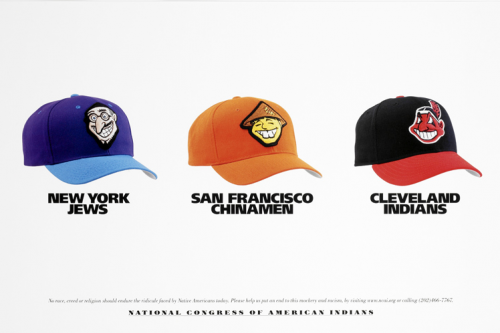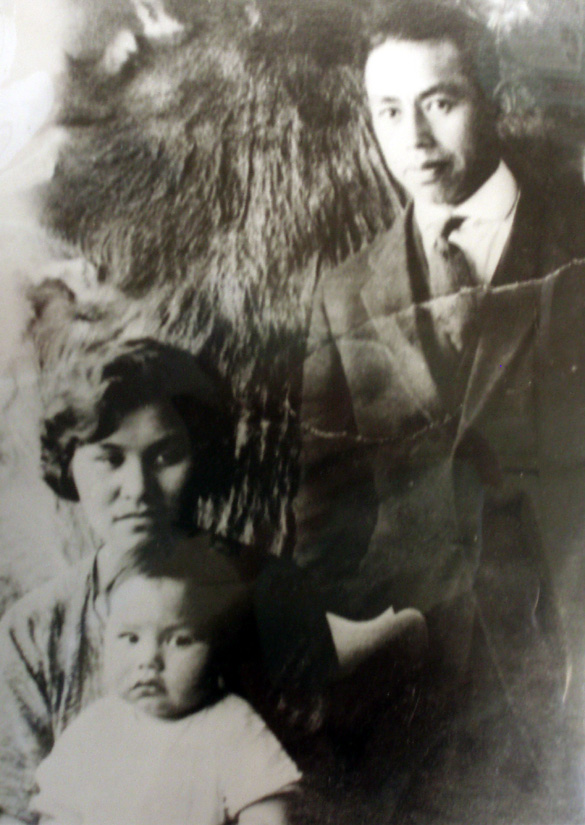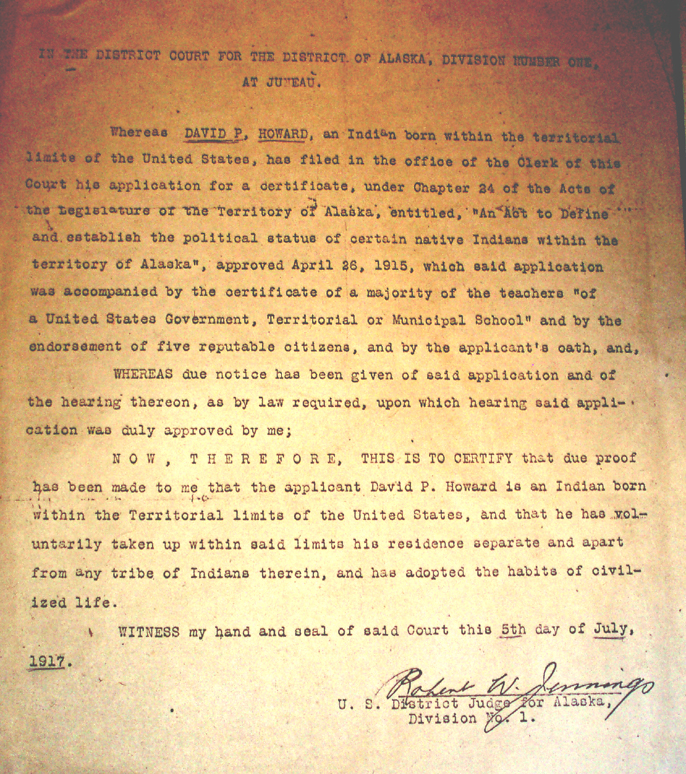Last week, John Kerry made a joke about John McCain’s age, implying that he wears Depends (that is, adult diapers). I have searched everywhere and haven’t been able to find any video of Kerry telling the joke; all the discussions I’ve been able to find of it seem to lead back to an original story at PolitickerMA.com. It brought up something that has bugged me throughout this campaign: the cheap shots about McCain’s age. For example (thanks to Burk for finding me all these images):
Found here.
Found here.
The Baltimore Sun posted this photo and asked readers to provide captions for it:
Suggested captions included jabs about Ensure, reaching out to senior citizens, nursing homes, forgetfulness, and so on.
While I’ve heard a lot of people talking about racism in depictions of Barack Obama, and sexism in portrayals of Sarah Palin and Hillary Clinton, I have heard very few people discuss the very negative depictions of the the “old” being used to ridicule McCain. Depictions of older people range from out-of-touch, doddering fools to crazed racists to pathetic invalids. Although Kerry’s joke drew some criticism, jokes or comments about McCain’s age have generally been given a pass–they’ve been declared fair game. You might get in trouble in our culture for being sexist or racist, but apparently ridiculing people for being old is fine.
I don’t know about you, but I know some old people, and they are healthy, coherent, mentally competent people who appear to have complete control of their bladders and bowels. My grandmother is 70 and runs a 110-cow ranch on her own in Oklahoma, doing all of the labor herself (except that she hires someone to come in and bale the hay each year). Just as I thought it must be awful to be an Arab American and hear accusations that Obama is secretly Arab or Muslim used as a slur against him, I’ve wondered how my grandma feels, hearing McCain’s age ridiculed. My guess is that she finds it mortifying, but I haven’t gotten up the courage to ask.
I have also on more than one occasion heard people mock John McCain’s physical appearance, particularly the fact that one side of his face is swollen because he had a patch of skin removed due to skin cancer. The times I overheard this, they weren’t expressing concern that he might have a serious form of cancer that could kill him or force him to leave office; they were just laughing at how he looked.
If McCain showed evidence of dementia or osteoporosis or some other condition that you could maybe directly relate to his age, then ok, fine, I could see people commenting on it. But that’s not what’s going on here. This is just making fun of his age for the sake of it–it’s funny that he’s old, because old people are laughable. It’s an interesting statement about the value we place on older people in this culture.

